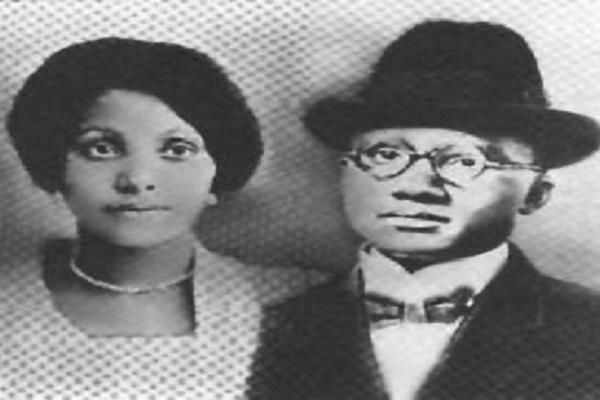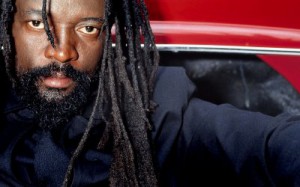Louise Helen Norton Langdon was born in La Digue on the Caribbean island of Grenada in 1897. Her mother Ella was raped by an English landowner named John Norton. This was not an isolated incident, and there are reports of many other children born bearing the Norton name through incidences of sexual abuse. It was customary for European landowners to leave their wives back in Europe, while taking care of their business interests abroad and such incidences of rape were normalised under slavery and the colonial system that operated in the Caribbean.
Louise was raised by her maternal grandparents, Jupiter and Mary Jane Langdon. After the slave trade officially ended, enslaved people were still being transported to the Caribbean as slave labour and her grandparents were two of many Afrikans that were freed by the British Royal Navy, from ships still trading in human cargo. The pair was thought to have been enslaved in the region of what is now Nigeria, and both eventually settled on the island of Grenada.
Louise was educated in a local Anglican school, under the Negro Education Grant scheme. Education was administered through the churches with the purpose of educating former enslaved people and also as a means of indoctrinating them into Christianity. That was the only way that they could get a formal education. She was a bright student and was fluent in English, French and Grenadian French Creole; Grenada, previously having been a French colony for over 100 years.
A year after her grandmother’s death in 1916, twenty-year-old Louise left Grenada for Canada. Her uncle Egerton Langton, a carpenter, had migrated to Montreal, Canada in 1913. Montreal she hoped would provide her with the opportunities that she lacked in Grenada. She was fluent in French and would be able to use her language skills to secure work as a seamstress, as job opportunities were limited for most women in the Caribbean. A few were fortunate to secure work as domestics in European households, but the majority were reliant on income from men. Some women tried to be self-sufficient and became seamstresses. The ability to sew provided a measure of independence and was a source of income for those who were skilful.
It was in Canada, that Louise was first introduced to the teachings of Marcus Garvey by her uncle Egerton Langdon. Egerton Langdon first heard Garvey speak in Harlem in 1916, and became a convert to the philosophy of the Pan-African movement that advocated black unity, black pride, and the unification and repatriation of Africans and their descendants. For Black’s in the 1900’s, who had to endure the brutalities of racism in all walks of life, this message was a source of inspiration and hope. Egerton invited Garvey to Montreal in 1917, and introduced Garvey to his niece Louise, who embraced the teachings of the Universal Negro Improvement Association (UNIA). In May 1919, Louise Langdon married widower, Earl Little, an American lay preacher, after meeting him at a UNIA conference the previous year in Montreal.
By 1920, the UNIA had expanded and had over 1,100 divisions worldwide. In Canada, there were 32, divisions and a quarter of the 20,000 Black population of Canada became members of the UNIA, many of whom were of Caribbean origin. In 1920, the couple moved to Philadelphia in search of a better life. A year later, they moved to Omaha Nebraska, where Louise became the secretary and branch reporter of the local chapter of the UNIA. As a reporter, she sent news of local UNIA activities to Garvey’s newspaper, Negro World for monthly publication.
By 1926, the Littles’ had four children and they inculcated in them their beliefs in black pride and self-reliance. However, their beliefs and activities caught the attention of the Ku Klux Klan and in 1926; they had to move to Wisconsin because of the threat of violence. In Wisconsin, more violence threatened and they moved to Grand Rapids, Michigan, in the hope of finding safety. But again, they were harassed by white supremacist groups, and in 1929, their house was burned by a white racist group. In 1931, Louise was widowed when her husband was murdered, but which was officially deemed as a street car accident. After a dispute with insurers, Louise received the meagre insurance payment of $1,000, payable at $18 dollars per month; another higher insurance benefit was refused, claiming that Earl Little had committed suicide.
During the 1930s, the Great Depression affected everyone; however, economic instability hit African Americans hardest, and Louise found herself struggling. Nonetheless, she was resourceful and in order to raise some income, she rented out part of her garden for growing food. Her children also hunted game to supplement their diet. It was during that time that white Seventh-day Adventists witnessed to her and she and one of her children was baptised into the Seventh-day Adventist faith. In 1937, Louise became pregnant by a man that she had been dating and whom she hoped to marry. However, he abandoned her. This impacted her emotionally, more so, because of the church’s teachings on premarital sex. After the birth of her last child, Louise suffered postpartum depression that resulted in a nervous breakdown.
But who was Louise Little, you may be wondering? She was an intelligent, adventurous and ambitious woman. She supported the ideology of unity and cohesiveness amongst Black people and had a strong sense of Black identity and pride. She was mentally strong, had a strong sense of social justice, and actively promoted UNIA ideology. She was self-reliant and her inner strength sustained her in staying strong against a system that discriminated against her. Before her husband’s murder, the family were financially stable; owning their own home and cars. Nonetheless, her story is one of struggle, hardship and heartache. Raising seven children single-handedly was exhausting, and that was compounded by the fact that she had no family that she could rely on for help. But she was a fighter and her maternal instincts were strong in trying to protect her children from the fearful climate of terrorism and murder in which they lived. She nurtured the different personalities of her children and allowed them to thrive emotionally. Keeping her family together would have been high on her priorities.
Having been raised by her grandparents, her sense of abandonment by her mother (for whatever reasons) would have been strong. She was also living with a lot of emotional trauma from the murder of her husband, who would have been her main supporter, intellectually, emotionally and physically.
In 1937, Louise became pregnant by a man that she had been dating and who she hoped to have married, however, he abandoned her. After the birth of her last child, Louise suffered postpartum depression resulting in a nervous breakdown. She was hospitalized in Kalamazoo Psychiatric Hospital and as a result of that, all of her children were placed in foster care. Louise was to remain there for the next 24 years, until her children were successful in getting her released in 1963. Louise Helen Norton Langdon Little gave birth to eight children; however, the most famous of her children was Malcolm X.




